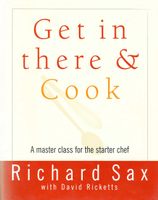Advertisement
Braising Basics
Appears in
By Richard Sax
Published 1997
Braising—long, slow simmering, covered, in a small amount of liquid—is best suited to the tougher, less expensive cuts of meat, such as chuck, shoulder, rump, and brisket, and “tougher” vegetables, such as Belgian endive or celery. The process involves a few simple steps:
- The meat is first browned in fat to seal in the juices (sautéing).
- Seasoning vegetables and aromatics such as spices and herbs are cooked briefly in fat, and the meat or other food is then arranged on top of this aromatic bed in another pot.
- The pot should be just large enough to hold the meat and liquid without crowding.
- The added liquid is first used to deglaze any pans used for sautéing, and is then added to the pot with a little wine, broth, water, leftover meat gravy, tomatoes, or other flavorful liquid.
- Simmering, covered, may be done either on top of the stove or in the oven for a more even, all-around heat (less chance of scorching the bottom of the pot).
- The sauce or juices are thoroughly degreased—using a large metal spoon or skimmer, removing all the fat and foam from the surface of the liquid. If time permits, refrigerate the pot overnight and then easily remove the solidified grease from the top the next day.
- Always taste and correct the seasonings before serving, adding salt and pepper and whatever other seasoning is needed.

